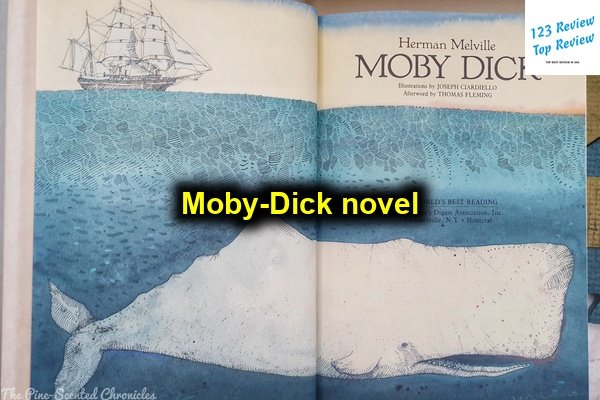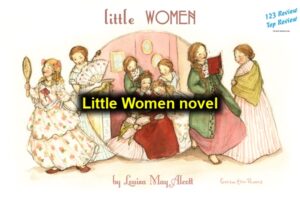The story centers on Captain Ahab, who is obsessively hunting the elusive white whale, Moby Dick, after the creature once destroyed his ship and severed his leg. The novel delves into themes of obsession, revenge, and the struggle between man and nature, rich with symbolism and philosophical reflections. Initially overlooked, “Moby-Dick” is now celebrated as one of the greatest American novels, hailed for its intricate narrative, vibrant characters, and profound exploration of the human condition.

Literary Analysis of Moby-Dick
Herman Melville’s Moby-Dick, published in 1851, stands as one of the towering achievements in American literature. At its heart, the novel is a multifaceted exploration of the human condition, delivered through the lens of a sea voyage. The story follows Captain Ahab and his obsessive quest to kill the great white whale, Moby-Dick, which had previously maimed him. While the novel centers on this epic man-versus-beast conflict, its deeper meanings touch on philosophy, religion, the nature of fate, and humanity’s relationship with the vast forces of nature. Melville uses the whaling voyage of the Pequod as a stage upon which to examine existential questions, blending rich symbolism and intellectual depth with the raw adventure of seafaring life.
Themes Explored in Moby-Dick
Melville masterfully interweaves multiple themes throughout Moby-Dick, each contributing to the novel’s depth and complexity. One of the central themes is that of obsession, embodied by Captain Ahab’s fanatical desire to hunt down Moby-Dick. Ahab’s pursuit of the whale, which represents his need to dominate nature and assert his control over fate, ultimately leads to his downfall. This theme extends beyond Ahab, as many characters in the novel struggle with their own desires and obsessions, which often clash with the unpredictable forces of the natural world.
Another key theme is the confrontation between man and nature. The whale symbolizes the uncontrollable and indifferent power of the natural world, a force that humans can neither fully understand nor dominate. The Pequod’s voyage represents humanity’s attempt to impose order on this chaotic and often hostile environment, yet time and again, the crew finds themselves at the mercy of the sea’s whims.
Existentialism permeates the novel as well. Characters ponder the meaning of their existence, their fates, and their roles in the universe. Melville’s narrative often pauses to reflect on life, death, and the idea of destiny, leading to an ongoing tension between free will and fatalism. This philosophical aspect gives the novel a meditative quality, transforming what might have been a simple adventure into a profound inquiry into human life.
Character Development in Moby-Dick
Melville’s Moby-Dick boasts a diverse cast of characters, each contributing to the novel’s themes in unique ways. Captain Ahab, the most central figure, is a complex character driven by an all-consuming obsession with Moby-Dick. Ahab’s relentless pursuit of the whale turns him into a tragic figure, a man whose monomaniacal focus ultimately alienates him from humanity and leads to his demise. His character reflects the destructive nature of unchecked ambition and obsession, posing questions about the limits of human willpower in the face of insurmountable forces.
Ishmael, the narrator, serves as the reader’s guide through the philosophical and physical landscape of the novel. Though initially an ordinary sailor, Ishmael transforms into a reflective and contemplative figure who questions the world around him. His voice fluctuates between awe, curiosity, and skepticism, providing a balanced and insightful perspective on the events unfolding aboard the Pequod.
Queequeg, the Polynesian harpooner, is one of the novel’s most intriguing characters. Initially an outsider due to his ethnicity and appearance, Queequeg defies stereotypes by being kind-hearted, brave, and noble. His friendship with Ishmael breaks down racial and cultural barriers, symbolizing the potential for unity and brotherhood among people from different walks of life.
Starbuck, the first mate, represents the voice of reason and morality in contrast to Ahab’s reckless determination. Starbuck repeatedly tries to dissuade Ahab from his destructive course but is ultimately powerless to stop him. His inner conflict between loyalty and his moral compass makes him one of the novel’s most poignant characters, highlighting the tragic nature of the Pequod’s doomed voyage.
Symbolism of Moby-Dick
Moby-Dick is a treasure trove of symbolism, with nearly every element of the novel carrying deeper meanings. At the center of the novel’s symbolic framework is the white whale itself. Moby-Dick is far more than a mere animal—it represents everything from nature’s sublime power to the unknowable mysteries of the universe. For Ahab, Moby-Dick becomes an almost supernatural force, embodying his personal demons and the futility of his quest for control.
The Pequod, too, is a powerful symbol in the novel. The ship, with its multicultural crew, mirrors the diversity and complexity of the world at large. The vessel’s journey across the ocean can be seen as a metaphor for humanity’s journey through life, constantly navigating the forces of fate, nature, and the unknown.
The ocean, with its vastness and unpredictability, symbolizes the overwhelming power of the natural world and the existential challenges it poses. Ishmael frequently reflects on the sea’s role as a metaphor for life itself—a place of both beauty and danger, where individuals are dwarfed by forces beyond their control.
Critical Reception and Reviews
Initial Reactions to Moby-Dick
When Moby-Dick was first published, it did not achieve immediate success. In fact, the novel was met with a rather lukewarm reception, with many critics finding Melville’s dense prose and philosophical musings difficult to digest. Some reviewers appreciated the adventurous aspects of the story but were put off by the book’s complexity and length. The American literary scene of the 1850s was not yet ready to fully appreciate the intricacies of Moby-Dick, and the novel did not sell well, contributing to Melville’s declining reputation during his lifetime.
Evolving Perspectives on Moby-Dick
It wasn’t until the 20th century that Moby-Dick was rediscovered and recognized for the masterpiece it truly is. During the early 1900s, scholars and critics began to re-evaluate the novel’s themes, narrative structure, and symbolism. They found in Moby-Dick a precursor to modernist literature, particularly in its fragmented narrative and philosophical depth. What was once seen as an overly ambitious and incoherent work became appreciated as a groundbreaking exploration of humanity’s struggle with existential questions.
The novel’s portrayal of the conflict between man and nature, its meditation on fate and free will, and its use of symbolic imagery all gained new significance in a world increasingly interested in psychological and philosophical complexity.
Contemporary Reviews of Moby-Dick
Today, Moby-Dick is heralded as one of the greatest novels in American literature. Critics praise its rich layers of meaning, intricate character development, and bold exploration of universal themes. Melville’s experimental narrative techniques, such as his digressions into whaling lore and philosophical inquiry, are now recognized as innovative rather than indulgent. The novel’s ability to address fundamental questions about life, identity, and destiny continues to captivate scholars and readers alike.
While Moby-Dick remains a challenging read for many contemporary readers due to its complexity, but it is widely regarded as an essential work of literature. Modern readers appreciate the novel’s daring structure, symbolism, and philosophical inquiries. Critics today often focus on how Moby-Dick reflects America’s cultural and historical context, especially in its treatment of race, identity, and humanity’s role in the natural world. This ongoing critical interest keeps Moby-Dick in the forefront of academic discussion, ensuring its place in the literary canon.
Writing Style and Techniques
Narrative Style in Moby-Dick
Melville’s narrative style in Moby-Dick is one of the novel’s most distinctive features. Rather than a straightforward first-person narrative, Melville employs a hybrid form, mixing Ishmael’s personal perspective with broader, often omniscient observations. This shifting narrative voice allows Melville to explore both the inner thoughts of his characters and the grand, cosmic questions that loom over the story.
The novel is filled with digressions that interrupt the main plot. These digressions often take the form of essays on whaling, legal philosophy, or theological reflections. While these chapters can be seen as interruptions to the story, they are also essential to the novel’s larger philosophical framework. By including these wide-ranging asides, Melville pushes the boundaries of traditional storytelling, creating a text that feels more like a meditation on existence than a mere adventure tale.
Use of Figurative Language in Moby-Dick
Melville’s use of figurative language is another hallmark of his writing. The novel is filled with vivid metaphors, similes, and symbolic imagery, which serve to elevate the narrative from a simple whaling story to an epic exploration of life and death. For example, Melville frequently compares the ocean to a living, breathing entity, full of dangers and mysteries. Similarly, Ahab’s pursuit of Moby-Dick is described in terms that evoke the biblical, the cosmic, and the mythological, lending his quest a universal, almost archetypal resonance.
Melville also uses figurative language to explore the tension between the known and the unknown, the tangible and the intangible. This tension is most evident in the figure of Moby-Dick himself. The whale is described as both a physical creature and a symbol of larger, unknowable forces, and Melville’s language captures this duality in ways that invite readers to interpret the whale’s meaning for themselves.
Structure and Length of Moby-Dick
At over 600 pages, Moby-Dick is not a brief or simple read. The novel’s length allows Melville to fully explore his themes, but it also presents challenges to readers. The structure of the novel is non-linear and often digressive, with entire chapters devoted to technical discussions of whaling or philosophical musings that may seem unrelated to the main plot. This episodic structure allows Melville to delve deeply into his characters’ psyches and the novel’s broader themes but can also be disorienting for readers expecting a more traditional, linear narrative.
Despite its length, the novel’s structure plays an important role in its overall impact. The constant shifts between action, reflection, and digression mirror the unpredictable nature of the sea and of life itself, reinforcing the novel’s central themes of uncertainty and existential struggle.
Significance in American Literature
Moby-Dick’s Impact on Future Literature
Moby-Dick has had an indelible impact on the trajectory of American literature. Its experimental narrative structure, use of symbolism, and philosophical depth paved the way for later literary movements such as modernism and postmodernism. Writers like William Faulkner, Joseph Conrad, and even Thomas Pynchon have cited Moby-Dick as an influence on their own work, particularly in terms of its complex character development and its exploration of existential themes.
Melville’s blending of adventure with philosophical inquiry also set a precedent for future novels that seek to tackle grand themes through richly layered storytelling. The novel’s influence can be seen in contemporary works that address the tension between humanity and the environment, the limits of human ambition, and the often inscrutable forces that shape our lives.
Comparisons to Other Classic Novels
Moby-Dick is often compared to other classic works of American literature, such as Mark Twain’s The Adventures of Huckleberry Finn and F. Scott Fitzgerald’s The Great Gatsby. While these novels differ in terms of style and subject matter, they all explore fundamental questions about the American experience, identity, and the pursuit of meaning.
Whereas The Great Gatsby focuses on the corruption of the American Dream and the emptiness of material success, Moby-Dick grapples with existential questions on a grander, more universal scale. Similarly, while Huckleberry Finn examines issues of race, morality, and social justice in a more grounded, satirical way, Moby-Dick transcends its historical context to explore the larger philosophical and spiritual dimensions of human life.
Reader Experience and Interpretation
Challenges Faced by Readers of Moby-Dick
Readers of Moby-Dick often encounter significant challenges due to its dense prose, shifting narrative styles, and philosophical digressions. The novel’s heavy use of whaling terminology, long descriptions of whale anatomy, and chapters that read more like essays can be daunting, especially for those approaching the book with expectations of a straightforward adventure story.
Moreover, Melville’s frequent use of symbolism and metaphor requires readers to engage with the text on multiple levels. Understanding the broader themes of the novel often requires careful attention to the symbolic meanings behind key images and events. For readers willing to invest the time and effort, however, these challenges are part of what makes the novel so rewarding. The deeper one delves into Moby-Dick, the more layers of meaning are uncovered.
Personal Reflections on Reading Moby-Dick
Many readers find that their relationship with Moby-Dick evolves over time. For some, the novel may initially seem impenetrable, with its dense language and philosophical digressions. However, on subsequent readings, many discover new insights into the novel’s themes, characters, and symbolism. This complexity makes Moby-Dick a book that can be revisited multiple times, each reading offering a fresh perspective.
The novel’s depiction of humanity’s struggle with fate, nature, and obsession resonates with readers in different ways depending on their own life experiences. As such, Moby-Dick often feels like a deeply personal journey, as readers reflect on their own confrontations with the unknown and the uncontrollable forces that shape their lives.
Adaptations and Cultural Influence
Film and Television Adaptations of Moby-Dick
Moby-Dick has been adapted into numerous films, television series, and even stage productions, with each adaptation offering a different interpretation of Melville’s sprawling narrative. The 1956 film directed by John Huston, starring Gregory Peck as Captain Ahab, remains one of the most famous adaptations, praised for its faithful recreation of the novel’s epic scale and its intense portrayal of Ahab’s obsession.
Other adaptations have taken more liberties with the source material, emphasizing different aspects of the story or exploring its themes in new ways. In addition to traditional film and television adaptations, Moby-Dick has inspired operas, ballets, and even radio dramas, attesting to the novel ‘s enduring influence across various forms of media. Each adaptation brings its own interpretation of the novel’s themes, characters, and conflicts, reflecting the timeless nature of Melville’s work. In these interpretations, Captain Ahab’s obsession, the symbolic power of Moby-Dick, and the vastness of the ocean continue to captivate audiences, transcending the written word and finding new expressions in visual and performing arts.
The complexity of the novel means that no single adaptation can fully capture the depth and nuance of Melville’s original text. As a result, different versions emphasize various aspects of the story, whether it’s the action and adventure of the whale hunt, the psychological torment of Ahab, or the philosophical underpinnings of the novel. These interpretations help keep Moby-Dick relevant and accessible to modern audiences who might otherwise find the original novel daunting.
Moby-Dick in Popular Culture
Beyond formal adaptations, Moby-Dick has seeped into popular culture in countless ways. References to the novel can be found in films, television shows, music, and even video games. The image of Captain Ahab as the quintessential obsessive hero has become iconic, influencing everything from Star Trek to Jaws. Similarly, the white whale has come to symbolize elusive goals or unattainable desires, a metaphor that is commonly used in various forms of storytelling and everyday language.
Melville’s work has also inspired numerous authors, musicians, and artists. Writers like Cormac McCarthy, Philip Roth, and Don DeLillo have all acknowledged Moby-Dick as an influence on their writing. The novel’s rich symbolism and profound exploration of human nature resonate across generations, making it a source of inspiration for creators in multiple fields. Even in contemporary music, songs by artists like Led Zeppelin and Mastodon reference Moby-Dick, underscoring the novel’s lasting cultural relevance.
Conclusion and Lasting Legacy of Moby-Dick
Continued Relevance of Moby-Dick Today
Over 170 years after its publication, Moby-Dick remains a seminal work in American literature, continually studied and analyzed for its timeless exploration of humanity’s struggles with fate, nature, and obsession. The novel’s themes are as relevant today as they were in the 19th century. In a world increasingly concerned with the environment, the relationship between man and nature as depicted in Moby-Dick feels especially prescient. The novel’s exploration of the limits of human knowledge and the consequences of unchecked ambition also resonate in contemporary discussions of technology, politics, and society.
Moreover, Melville’s philosophical inquiries into the meaning of existence, the nature of good and evil, and the role of fate in human life ensure that Moby-Dick continues to speak to readers across different contexts and generations. As long as people grapple with these existential questions, Moby-Dick will remain a relevant and powerful work of literature.
Moby-Dick’s Place in the Literary Canon
Moby-Dick has earned its place as a cornerstone of the American literary canon, alongside works like The Scarlet Letter and The Adventures of Huckleberry Finn. Its combination of adventure, philosophy, and richly symbolic storytelling makes it a unique and vital contribution to world literature. Unlike many novels of its time, Moby-Dick transcends its historical and geographical context, addressing universal themes that continue to captivate readers and scholars alike.
As one of the most analyzed and discussed novels in literature, Moby-Dick remains a subject of ongoing critical interpretation and debate. Its complex narrative structure, deep symbolism, and philosophical depth offer endless possibilities for new interpretations and perspectives. For many, the novel’s lasting legacy lies in its ability to reflect the ever-changing concerns of society while simultaneously addressing the eternal questions of life, death, and the human condition.
Final Thoughts
Moby-Dick is not just a novel about a whale or a sea captain’s pursuit of revenge—it is a monumental work that explores the depths of human experience. Its themes of obsession, fate, and man’s relationship with the natural world resonate as strongly today as they did when the book was first published. Despite its initial critical failure, Moby-Dick has grown in stature over the years, becoming a pillar of American literature and an enduring symbol of the complexities of human existence. The novel’s continued relevance, cultural influence, and its place in the literary canon ensure that Herman Melville’s Moby-Dick will remain a vital and cherished work for generations to come.





